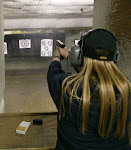“Fake” Hate Crimes are Real Hate Crimes Against Whites
Just in the last week, we’ve seen two major incidents of “faked” hate crimes make their way into the national media. First, police confirmed that the woman who claimed to have been attacked and to have had her hijab torn off [2]and wallet stolen by white men wearing Trump hats invented the whole account. Second, a Jewish and “white Hispanic” student duo were confirmed to have been behind the spray-painting of racist and homophobic slurs [3] along with the word “Trump” inside their campus chapel.
The mainstream response to incidents like these is to think, at first: “Oh no! Someone spray-painted swastikas on a church? This is a hate crime!” But then, once the culprits are proven to be leftist kids trying to pin the blame for their actions on neo-Nazi Trump supporters rather than actual neo-Nazi Trump supporters, that becomes: “Oh, it’s a good thing we figured that out. So there wasn’t any hate crime here after all! Just an act of vandalism. Time to punish the vandals for committing vandalism, then.”
But the fact is that, even though our multi-culture isn’t ready or willing to admit it, these “fake” hate crimes are still real hate crimes.
As a society, we have a classification for something called “hate crimes”—and we consider a “hate crime” to be worse than the regular instance of that same crime—because it represents an emotional disposition towards individuals who were not present within the crime itself—an emotional disposition which, if allowed to express itself freely without penalty, would inspire others to commit similar acts against those other individuals. We don’t consider it a “hate crime” for a white person to assault a person who happens to be black over (say) a traffic dispute, and we don’t necessarily think that this crime was worse just because its victim happened to have been black. But if a white person assaults a black person simply because he is black, then the fear that this will inspire similar acts of violence leads us to add extra deterrence against that possibility.
Whether one is a minority or not has no bearing whatsoever on the validity of this underlying logic. In fact, while it is true that a majority group actually faces a smaller number of possible assailants from outside, it also represents an even greater number of possible. The average white person in the United States encounters fewer black people per day than the number of white people encountered by the average black person. As a result, there are actually more opportunities for whites to fall victims to hate crimes.
Yet, when the victim of an act of hatred is a Republican white male, this reasoning immediately goes straight out the window. (It should be noted that people who meet all of these criteria represent somewhere loosely within the range of 15 to 25% [4] of the U.S. population; whites are about 63% of the U.S. population, approximately half of them identify as conservative, and approximately half of those are male.)
“Fake” hate crimes are real hate crimes against whites. They are literally meant to inspire hatred against a whole group of people.
They do so by crafting the deceptive impression that whites themselves are hateful enough to have committed fake hate crime. But the fact that a hate crimes is faked doesn’t make it a “fake” hate crime. It is still a real hate crime. “Faking” an act of hatred is merely the means by which this particular subset of hate crime is designed to inspire hatred against a whole group of people.
Filing a false criminal accusation [5] is something that the American legal system classifies as a felony—the highest category of crime possible against the federal government itself. This exists to eliminate incentives to destroy someone’s life without penalty by making a false accusation which is taken seriously, and to punish supposed victims for misappropriating the resources of the justice system.
It matters not that the “fake” hate crime fails to accuse any particular person (be they white, Republican, male, straight, or whatever else) of having committed the action—no more than it matters that a “hate crime” rarely if ever entails that a future threat was made towards any specific person (be they gay, black, or whatever else). What qualifies a “hate crime” as a “hate crime” is the hatred it expresses, and which we fear it could help inspire more of, towards a whole group of people—people who specifically were not involved in, or victimized by, or even verbally threatened during the commission of the “hate crime” itself, which on its face only caused harm to a single individual.
Incentives matter. If we look at the trends in occurrence of these “fake” hate crime, it is clear that our lax treatment of “fake” hate crimes has fueled their growth.
In 2007, there were two incidents—a student at George Washington University targeted herself with swastika graffiti [6], and an Assistant Professor at Case Western Reserve University made a false report of racist hate mail [7] to the FBI.
But fast forward to 2012, and a gay man in Montana who injured himself attempting a backflip claim the injuries resulted from a homophobic attack [8]; a black woman in Louisiana claimed the KKK “set her on fire” [9] for wearing an Obama t-shirt—and police later found her own fingerprints on the lighter; a black woman wrote racist death threats [10] on a whiteboard outside her own dorm room; a lesbian in Nebraska made false claims to the police after faking an assault on herself [11]; the owner of a gay bar in Chicago admitted to torching his own establishment and writing anti-gay slurs on the walls [12]; yet another college sophomore wrote homophobic death threats to herself [13] in the dorm; students at Montclair State University faked yet more racist graffiti [14]; a student at Michigan State University claimed he had his mouth stapled shut by neo-Nazis [15]; and a gay Republican activist even falsely claimed he was assaulted by a man yelling homophobic slurs [16] inside his home.
We go from a mere 13 incidents from 2007–2011 to 47 from 2012–2016: the numbers more than triple [17].
You can keep up with further developments in these trends at www.fakehatecrimes.org [18]. And buckle in for an era of even more black men leaving racist messages outside of black churches [19], gays carving “DIE QUEER” into their own skin [20], and Jews posting swastikas on Jewish bulletin boards [21]. Whatever criticisms one might make of milquetoast conservatives and the rest of the mainstream Right in the United States, and whatever silly or alarmist or inaccurate memes you may have seen on your conservative friends’ walls in the wake of the 2008 election, you never found them lying about getting kicked in the balls by angry feminists while walking down dark alleyways at night, using knives to carve the words “BLACK POWER” into their own limbs, or shitting in their own hallways to try to support their claims to social victimhood [22].
And that one fact alone tells you a lot about the respective psychologies of the Left and Right in the United States.









No comments:
Post a Comment